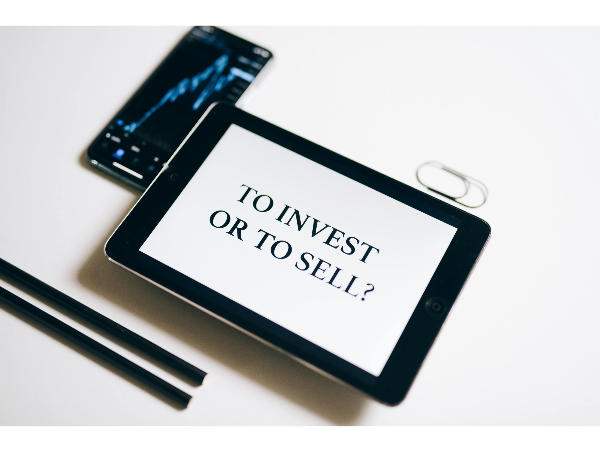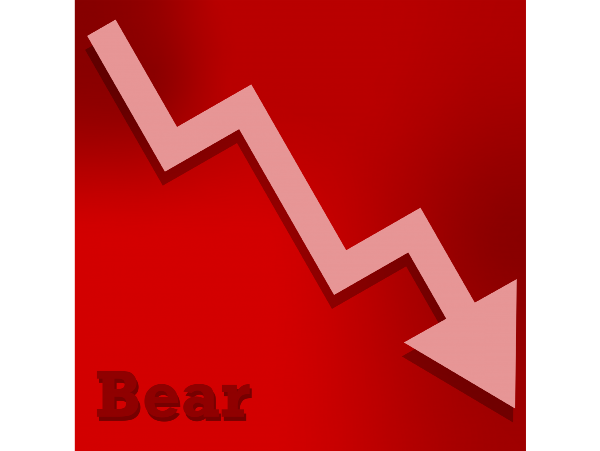Introduction
Small-cap stocks—typically companies with market capitalizations between $300 million and $2 billion—have long been a fertile hunting ground for value investors. While large-cap stocks often dominate headlines, small-caps can offer compelling opportunities for outsized returns, especially when they trade below their intrinsic value. In 2025, the case for small-cap value investing is particularly strong: these stocks are trading at near-historic discounts to large caps, and many fundamentally sound companies are overlooked by the broader market27. However, investing in small-caps comes with unique risks and requires careful research and a long-term perspective.
This essay explores why small-cap stocks are attractive for value investors, what defines a great small-cap value stock, the risks and rewards, and how to approach this segment for long-term success.
Why Small-Cap Stocks Appeal to Value Investors
- Attractive Valuations
Small-cap stocks are currently trading at some of the widest valuation discounts to large caps seen in decades27. On a forward price-to-earnings (P/E) basis, profitable small-caps are near all-time lows compared to their larger peers. This is partly due to a decade of underperformance and a market that has punished all small companies equally—regardless of profitability or growth prospects2.
- Growth Potential
Because small companies are earlier in their lifecycle, they have more room to grow. Most large-cap companies started as small businesses, and the next generation of corporate giants is likely hidden among today’s small-caps38. If you can identify a small-cap with strong fundamentals before it becomes widely recognized, the potential for capital appreciation is significant.
- Less Analyst Coverage
Small-caps are often underfollowed by analysts and institutional investors, resulting in less efficient pricing368. This creates opportunities for diligent value investors to uncover undervalued gems before the rest of the market catches on.
- Diversification
Small-cap stocks offer exposure to sectors and industries underrepresented in large-cap indices. They can also provide diversification benefits, as their performance is less correlated with large-cap stocks and more sensitive to domestic economic trends56.
What Makes a Great Small-Cap Value Stock?
Not all cheap stocks are good value. The best small-cap value opportunities share several key traits:
● Consistent Profitability: Companies with a track record of positive earnings and stable or improving margins are more likely to weather downturns and deliver long-term returns25.
● Strong Balance Sheets: Look for manageable debt, ample liquidity, and prudent capital allocation. While small-caps have more leverage on average, a significant portion actually have net cash positions, making them less vulnerable to interest rate risk27.
● Low Valuation Multiples: Seek out stocks trading at low P/E, price-to-book (P/B), or price-to-sales (P/S) ratios compared to their history and peers36.
● Earnings Growth Potential: Companies poised for an earnings rebound or with clear growth drivers are more likely to be re-rated by the market.
● Catalysts for Revaluation: These may include improving economic conditions, sector tailwinds, management changes, or the potential for mergers and acquisitions (M&A)45.
The Risks of Small-Cap Value Investing
- Volatility and Liquidity
Small-cap stocks are more volatile than large-caps, with bigger price swings and lower liquidity. This means prices can move sharply on news or during periods of market stress, making it harder to buy or sell shares at favorable prices346.
- Quality Dispersion
The influx of low-quality, unprofitable companies—especially after the SPAC boom—means that not all small-caps are created equal27. Passive index investing in small-caps can dilute returns with low-quality names; active management and stock selection are critical.
- Economic Sensitivity
Small-caps are more exposed to domestic economic cycles and may suffer disproportionately in downturns. Their limited access to capital and higher sensitivity to interest rates can amplify risks during economic slowdowns246.
- Less Information
With less analyst coverage and fewer institutional investors, small-cap stocks often have less publicly available information, making due diligence more challenging36.
Strategies for Small-Cap Value Investing
- Diversify
Given the higher volatility and company-specific risk, diversification across sectors and business models is essential. Small-cap mutual funds or ETFs can offer broad exposure, but active managers are often better suited to navigate this space5.
- Focus on Fundamentals
Deep research into financial statements, management quality, and industry dynamics is crucial. Look for companies with strong cash flows, sustainable competitive advantages, and clear growth paths368.
- Monitor Valuation Metrics
Compare valuation multiples to historical averages and industry peers. Look for stocks trading at discounts to their own history and the broader market36.
- Watch for Catalysts
Keep an eye out for potential catalysts such as M&A activity, new product launches, or regulatory changes that could unlock value45.
Examples of Small-Cap Value Stocks and Funds
While the best opportunities will vary by region and sector, here are some archetypes and fund approaches:
Company/Fund Sector/Focus Value Proposition
T. Rowe Price US Smaller Companies Fund US Small/Mid-Cap Focuses on both value and growth
abrdn Global Smaller Companies Fund Global Diversified Exposure to undervalued global small caps
Janus Henderson European Smaller Companies Europe Diversified Half portfolio in sub-€1bn companies
Unicorn UK Smaller Companies UK Small-Cap Value Targets undervalued UK small caps
VT Downing Unique Opportunities Fund UK/Europe Value Focus on M&A and deep value
For individual stocks, look for companies in financials, industrials, and consumer discretionary sectors with low P/E ratios, strong balance sheets, and positive earnings trends48.
The Outlook for 2025 and Beyond
The outlook for small-cap value stocks is bright. As earnings growth accelerates, valuations remain near historic lows, and M&A activity picks up, value investors are well-positioned to benefit. Sector diversification, a more accommodative regulatory stance, and a shift in investor focus away from mega-cap tech all point to a favorable environment for small-cap value567.
Historically, small-cap value has outperformed over almost any medium- to long-term holding period, especially during economic recoveries and periods of market rotation. With active management and disciplined stock selection, investors can capture the upside while managing the risks inherent in this space56.
Conclusion
Small-cap stocks offer some of the best value opportunities in the market today. Trading at historic discounts, with accelerating earnings growth and broad sector exposure, they present a compelling case for value investors willing to do the work. While risks remain—especially around quality dispersion and volatility—active management, diversification, and a focus on fundamentals can help investors unlock the potential of this dynamic market segment. As the investment landscape shifts in 2025, the best small-cap value stocks may deliver the kind of returns that have made value investing a timeless strategy236.































Introduction Small-cap stocks—typically companies with market capitalizations between $300 million and $2 billion—have long been a fertile hunting ground for value investors. While large-cap stocks often dominate headlines, small-caps can offer compelling opportunities for outsized returns, especially when they trade below their intrinsic value. In 2025, the case for small-cap value investing is particularly strong: these stocks are trading at near-historic discounts to large caps, and many fundamentally sound companies are overlooked by the broader market27. However, investing in small-caps comes with unique risks and requires careful research and a long-term perspective. This essay explores why small-cap stocks are attractive for value investors, what defines a great small-cap value stock, the risks and rewards, and how to approach this segment for long-term success.
Why Small-Cap Stocks Appeal to Value Investors
What Makes a Great Small-Cap Value Stock? Not all cheap stocks are good value. The best small-cap value opportunities share several key traits: ● Consistent Profitability: Companies with a track record of positive earnings and stable or improving margins are more likely to weather downturns and deliver long-term returns25. ● Strong Balance Sheets: Look for manageable debt, ample liquidity, and prudent capital allocation. While small-caps have more leverage on average, a significant portion actually have net cash positions, making them less vulnerable to interest rate risk27. ● Low Valuation Multiples: Seek out stocks trading at low P/E, price-to-book (P/B), or price-to-sales (P/S) ratios compared to their history and peers36. ● Earnings Growth Potential: Companies poised for an earnings rebound or with clear growth drivers are more likely to be re-rated by the market. ● Catalysts for Revaluation: These may include improving economic conditions, sector tailwinds, management changes, or the potential for mergers and acquisitions (M&A)45.
The Risks of Small-Cap Value Investing
Strategies for Small-Cap Value Investing
Examples of Small-Cap Value Stocks and Funds While the best opportunities will vary by region and sector, here are some archetypes and fund approaches: Company/Fund Sector/Focus Value Proposition T. Rowe Price US Smaller Companies Fund US Small/Mid-Cap Focuses on both value and growth abrdn Global Smaller Companies Fund Global Diversified Exposure to undervalued global small caps Janus Henderson European Smaller Companies Europe Diversified Half portfolio in sub-€1bn companies Unicorn UK Smaller Companies UK Small-Cap Value Targets undervalued UK small caps VT Downing Unique Opportunities Fund UK/Europe Value Focus on M&A and deep value For individual stocks, look for companies in financials, industrials, and consumer discretionary sectors with low P/E ratios, strong balance sheets, and positive earnings trends48.
The Outlook for 2025 and Beyond The outlook for small-cap value stocks is bright. As earnings growth accelerates, valuations remain near historic lows, and M&A activity picks up, value investors are well-positioned to benefit. Sector diversification, a more accommodative regulatory stance, and a shift in investor focus away from mega-cap tech all point to a favorable environment for small-cap value567. Historically, small-cap value has outperformed over almost any medium- to long-term holding period, especially during economic recoveries and periods of market rotation. With active management and disciplined stock selection, investors can capture the upside while managing the risks inherent in this space56.
Conclusion Small-cap stocks offer some of the best value opportunities in the market today. Trading at historic discounts, with accelerating earnings growth and broad sector exposure, they present a compelling case for value investors willing to do the work. While risks remain—especially around quality dispersion and volatility—active management, diversification, and a focus on fundamentals can help investors unlock the potential of this dynamic market segment. As the investment landscape shifts in 2025, the best small-cap value stocks may deliver the kind of returns that have made value investing a timeless strategy236.